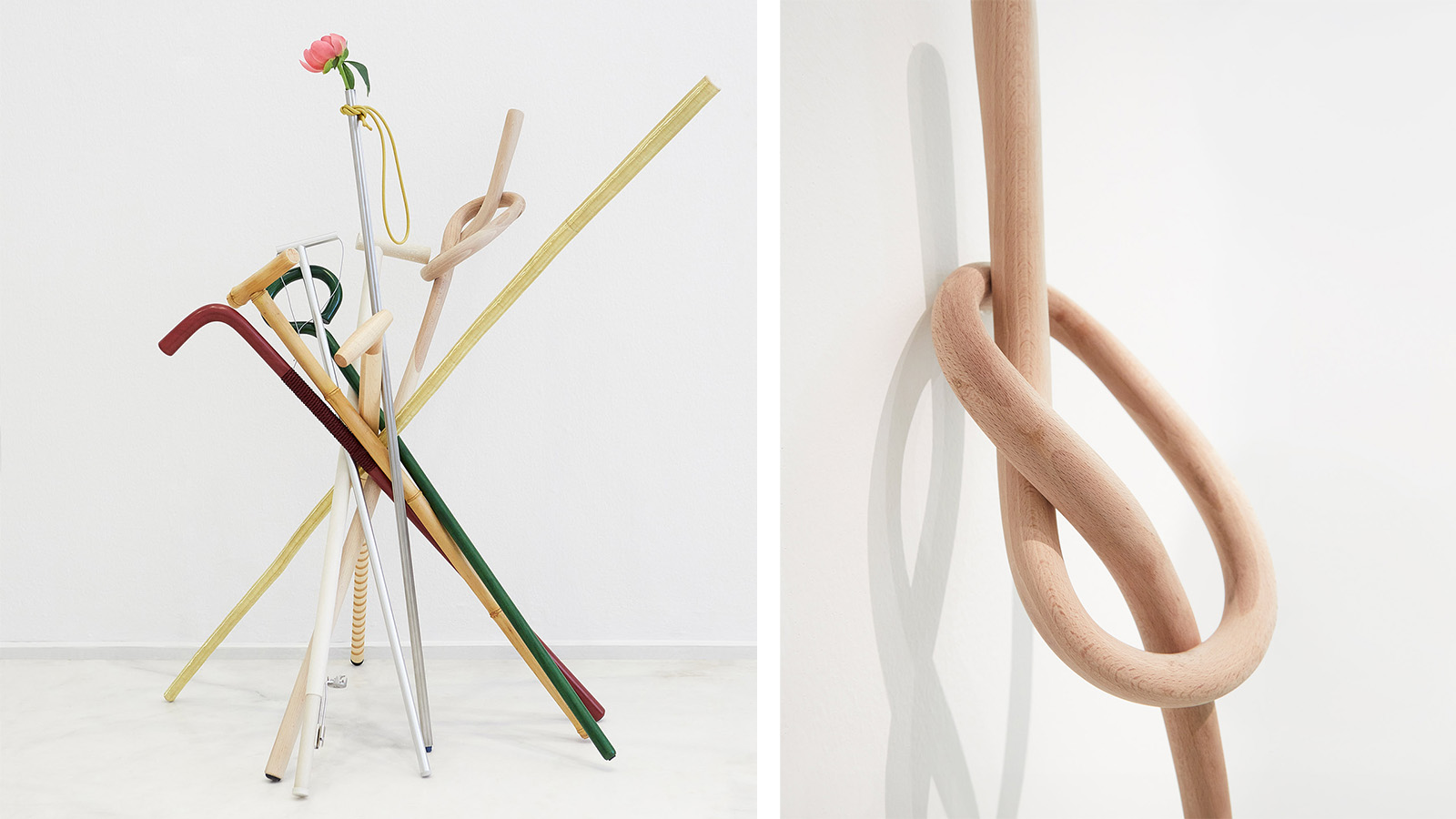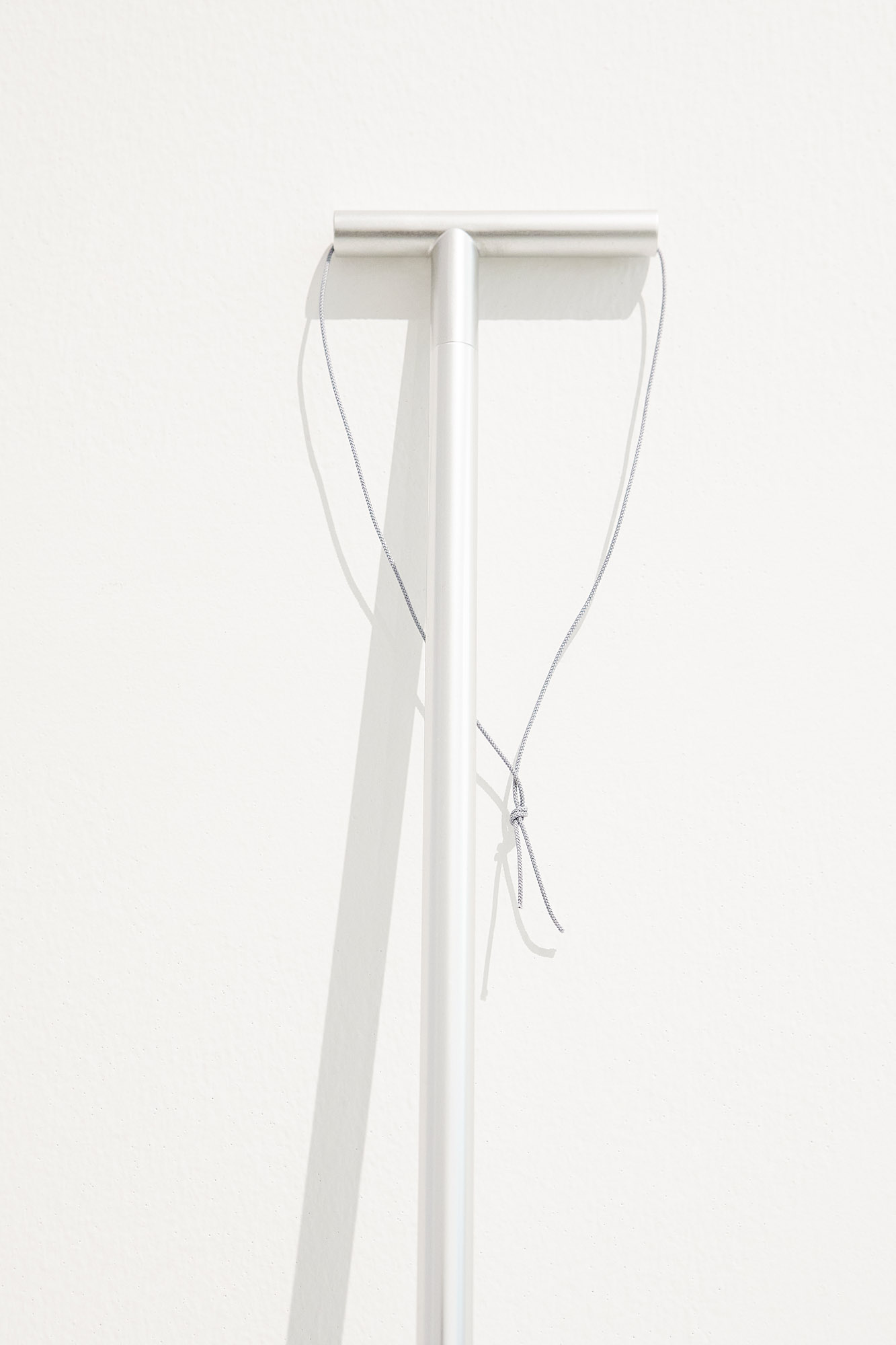
‘It’s not possible to go back in time to the very first cane. We can only imagine it started with someone picking up a small branch, trimming off the smaller twigs, and using it for a walk in the woods.’ Japanese designer Keiji Takeuchi’s musings on walking sticks – simple in form, yet complex in the nuanced layers of its associations with ageing today – form the foundation for a project exploring a spectrum of personal takes on the object.
Takeuchi, based in Milan since 2012, asked 17 designer friends around the world – among them, Cecilie Manz, Pierre Charpin, Jasper Morrison and Marialaura Irvine – a seemingly simple question: what kind of walking stick would they wish to use themselves?
The end result was ‘Walking Sticks & Canes’, staged at Triennale during Milan Design Week 2024. It showcased Takeuchi and his friends’ interpretations of the object, each with its own unique personality expressed through material, shape and form.
'Walking Sticks & Canes' by Keiji Takeuchi and friends

‘A number of years ago, I was thinking a lot about what design is, about how it should be approachable for everyone and about creativity, not money,’ explains Takeuchi. ‘I wanted to create an icon for these thoughts. I like things that are simple and primitive, universal and purposeful. Then I remembered my grandfather’s walking stick. And I began to notice more and more people in Milan walking on cobblestones with walking sticks.
‘In the past, walking sticks were primitive objects. Moses had a stick in the Bible. Napoleon and other commanders always had sticks. In the 19th century, it was a fashion item, particularly among English gentlemen. Then there was Charlie Chaplin. It’s been a reference for many different kinds of power. But today, there is a stigma attached to walking sticks. If you give one to someone, it implies that they are old and unable to walk. A lot of walking sticks also focus on physical performance and don’t look nice. So I asked my friends, if you had to go for a walk with a stick, what would you want it to be like?’

Design diversity underpins the end results (some of which were self-produced, others made by Japanese furniture makers Karimoku, sponsors of the exhibition) – a reflection of their range of ages and creative perspectives, spanning from the ingeniously functional to poetically escapist. Among them is ‘Milanese’, by architect and designer Maddalena Casadei, who crafted a walnut wood stick, connected by magnets and internal thread, with a minimal stainless steel handle for hooking on tabletops.
For his ‘Passi d’Oro’ stick, French artist and designer Pierre Charpin painstakingly wrapped a golden thread around a hazel wood stick, describing it as ‘the companion for my wanderings in dreams, where spatial perception is hazy and uncertain’. Alberto Meda, now in his late seventies, was inspired by weightlessness – resulting in ‘Lightwalk’, a functionally ergonomic carbon fibre stick with an anti-slip rubber foot and nylon handle tilted for comfort. Meanwhile, Julie Richoz created ‘Small Gestures’, a stainless steel tube with a pen cap in the base, a piece of rope wrapped around it and some flowers inserted at the top, inspired by ‘the gesture of picking a flower on a hike’.
Cecilie Manz’s words are as simple and honest as the object’s form: ‘A walking stick for when I get older.’ A clean-lined aluminium stick is capped by a horizontal handle, lightly oval to the touch, through which a simple cord is threaded. ‘I thought it should be really neutral, clean and functional,’ explains the Danish designer.

Meanwhile, Jasper Morrison made a stick from bamboo in his garden, placing a wine cork in the base. ‘I wanted to make it myself, as if there were no walking sticks available commercially.’ He adds, ‘Bamboo is so versatile. It’s the most extraordinary material – it grows fast, costs nothing and can be trained to do so many different things.’
Another example is the Portuguese-born, Copenhagen-based designer Hugo Passos’ ‘Cestino’ – a cherry wood stick wrapped in a wicker basket – its joyful romanticism more typically associated with youth than the ageing connected with walking sticks. ‘I wanted to add something a little bit joyful to growing old,’ he says. ‘As you get older, you probably would like to have a house with a little back garden – and go out in the morning and pick some herbs or vegetables for lunch while enjoying a bit of sun.”
For Takeuchi – whose own ‘Up’ stick consists of a simple, solid curve of sakura wood, with a paper cord grip – the project is ultimately about deconstructing preconceived ideas about objects and creating timeless honest design. ‘It’s asking the question: how do you make a product with a stigma attached to it – and how can we change it into a purposeful product that makes you want to go outside and walk with your friends again?’







